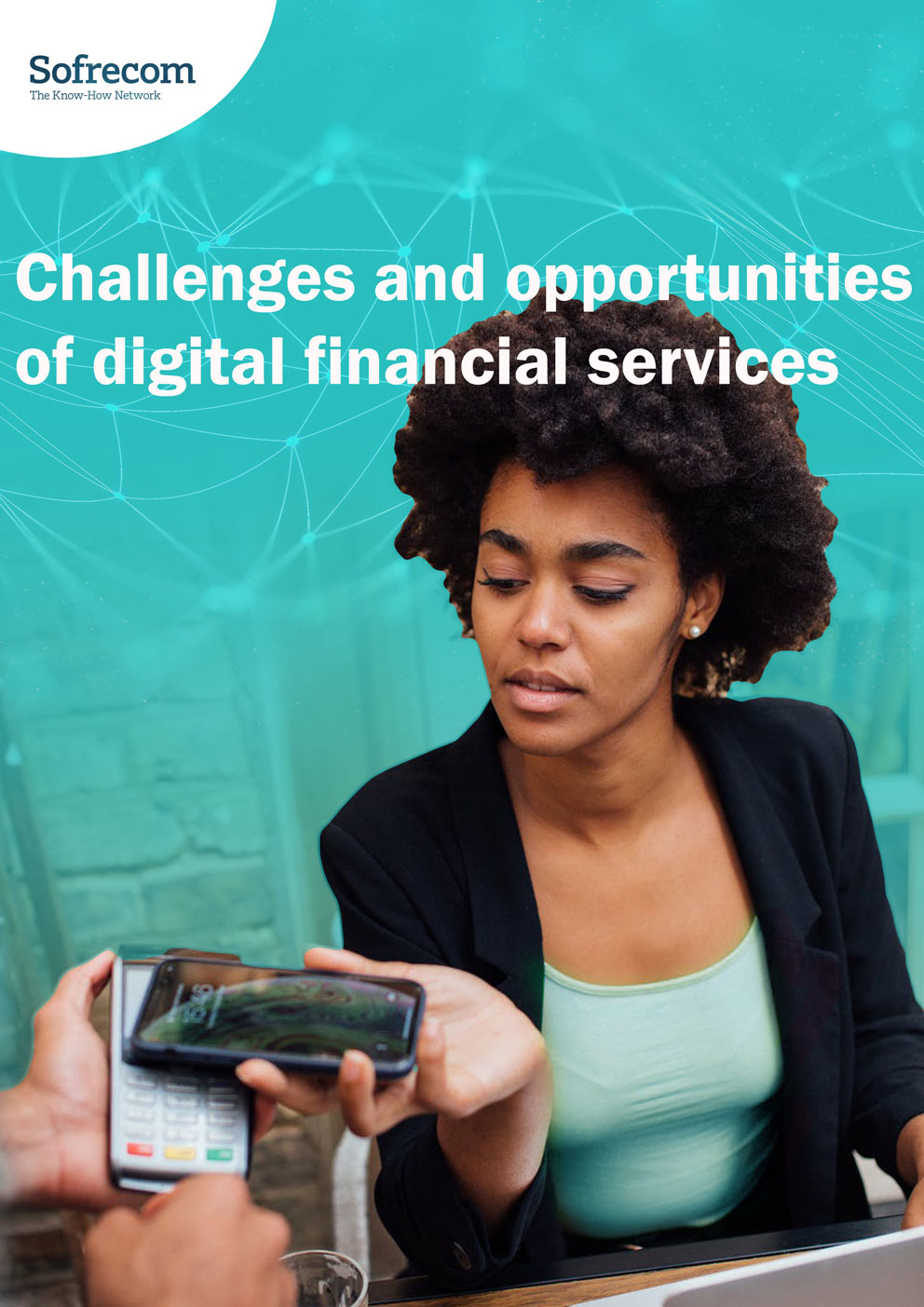
To succeed in mobile financial services operators must make themselves indispensable. This means moving beyond their traditional activities and into unexplored territory – while resisting the temptation to go it alone.
Mobile money: a vital asset for differentiation and loyaltybuilding in countries lacking banking facilities
Over the last decade cellcos have developed mobile money services first in Asia and Africa, then later in Latin America and the Middle East. The first ones allowed only money transfers between subscribers in countries where banking is underdeveloped or underused. This basic service has since been extended to include others such as bill payment and micro-credit. Today 40 million Africans use mobile money services.
Mobile money has also contributed to more general acceptance of digital services, even by populations little inclined to use them but who find that they meet specific needs. To deliver these services operators opt for USSD1, a simple, standard GSM technology supported by 99% of all GSM handsets.
In addition to generating commissions for operators, m-finance transactions have important indirect benefits: the service proves to be an excellent means of recruiting subscribers, building their loyalty and increasing their value. In places where users often have several SIM cards, an m-money provider is quite likely to be chosen as the user’s primary SIM.
Driving m-finance usage to boost its profitability
To date m-finance services have proved to be less profitable than airtime sales. There are two main reasons:
- Networks of retail partners take a slice of the commissions. These outlets are indispensable since they handle most cash deposits and withdrawals.
- The number of active users is still too small in comparison with the investment required to set up the service.
More widespread usage will bring operators a significantly better return on investment. In fact the CAPEX is relatively modest (compared to building a network, for example) and the GSMA estimates that when m-money services reach maturity they generate a 20% EBITDA margin, but barely 2% during the intermediate development phase in which many operators find themselves today. The m-money market is very far from saturation, so operators must intensify their efforts to educate potential users, develop distribution network capillarity and improve their operational efficiency.
Extending the offer withadditional services
To continue to create value it is vital to propose more than just money transfer between subscribers and purchase of talktime top-ups. The many possibilities include:
- international money transfer,
- bill payment,
- salary payment,
- online payment,
- insurance,
- savings and micro-credit.
International money transfer and salary services will inject substantial funds into the mobile money circuit and in doing so accelerate financial services development, even if these will always be hampered by the existence of the informal economy. Setting up financial services requires partnerships, often complex, with players in industries other than telecoms, such as banks and public utilities. An operator’s ability to cooperate simultaneously with numerous partners is vital for the long-term success of m-finance.
Interoperability is another profitability factor
Placing a user’s mobile wallet on his SIM card ties him to his operator, but the question of interoperability must be addressed if financial services are to become a vector for sustained growth. In markets with three or more providers, interoperability will spur businesses and governments to adopt mobile-based transactions.
While interoperability will blur the distinction between operators, it does create a “virtuous circle” driving up usage to the levels needed to assure profitability. It is likely to be accepted by operators once their activity reaches a critical size, notably in terms of the network of partners, to allow them to differentiate themselves on customer experience and their services offering. Some operators are already making their m-money services interoperable, for example Tigo, Airtel and Zantel in Tanzania.
| M-finance services make a major contribution to economic and social development and they are a major growth path for Orange in Africa and the Middle East. We are proud that 13 million people moved more than 4.5 billion euros in 2014 using our essential Orange Money services. In the years to come we will introduce these in other countries and continue to innovate, for example in the micro-credit field. Marc Rennard, Orange Executive Director AMEA and President of the Sofrecom Board of directors |
M-finance still to be invented in countries with developed banking
Many traditional and online banks allow bank account management via mobile devices, but contactless payment, coupons and money transfer are likely to become the principal m-finance usages.
Many players including banks, handset vendors, telcos, credit card providers and OTTs would like to gain control of the user authentication function. To date no single solution has managed to impose itself among the many proposals, which explains the relatively low adoption of m-finance in countries with good banking facilities.
Customer experience is the key criterion
To get this segment moving operators must take up the customer experience challenge, in other words propose simple, open services – and above all the indispensable interoperability between different players.
Contactless simplicity is a must for these services, and NFC has long been considered to be the ideal technology for merchant mobile payment. Top-line smartphones are already natively NFC-enabled, and more and more merchants have NFC payment terminals.
Moving beyond strictly telecoms activities to build tomorrow’s m-money ecosystem
Card payment networks (Visa, Mastercard, etc.) already installed at points of sale cannot be ignored, since they are an indispensable part of the customer experience by the presence of terminals at check-outs and their management of interactions with the consumer’s bank account.
To impose m-finance, operator partnerships with cards suppliers, banks and other operators will be necessary. Some operators may even acquire or develop a specific banking activity (Telenor in Serbia is one example).
In Europe and the United States many players are positioning on m-finance, including Apple with its Apple Pay solution and OTTs (Google Wallet). Yet having a solution is only the first step: merchant equipment, terminals, banks and operators must all be converged into a service that consumers find compelling!
As yet there is no large market to guide the structuring of an ecosystem and propel the m-finance movement. The challenge remains wide open for operators who have the courage to move beyond their traditional activities and federate this convergence.




